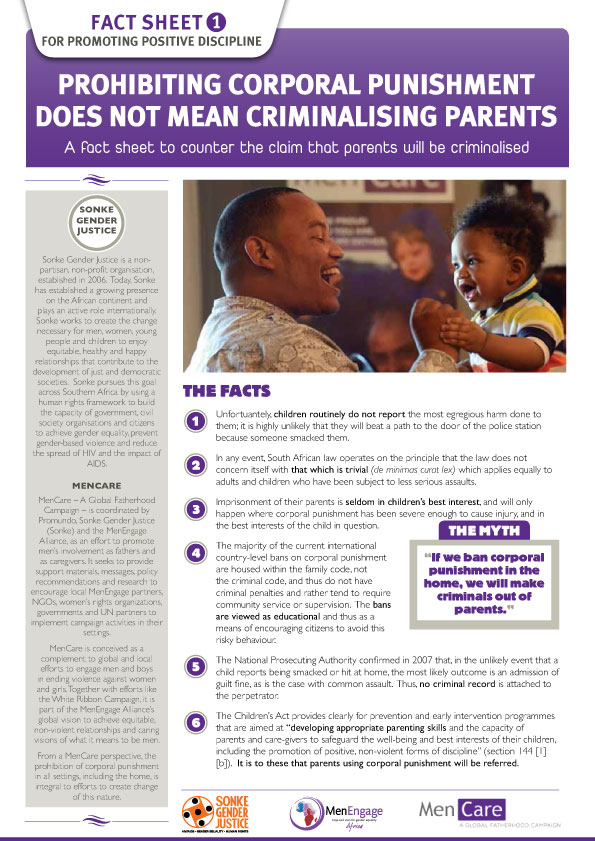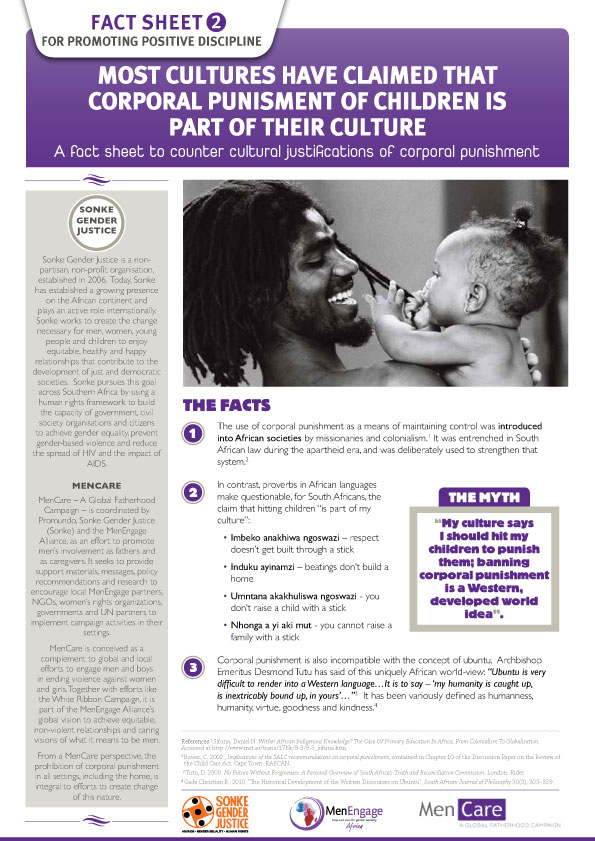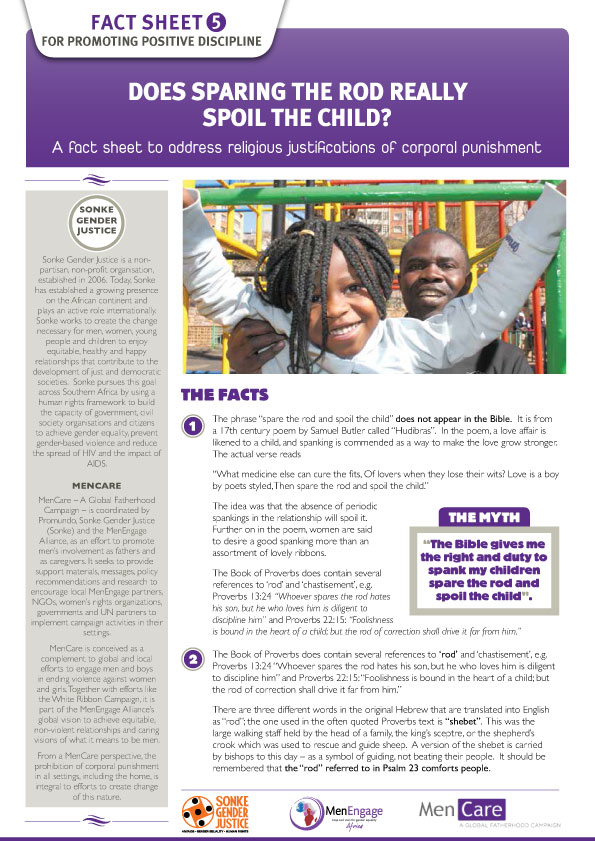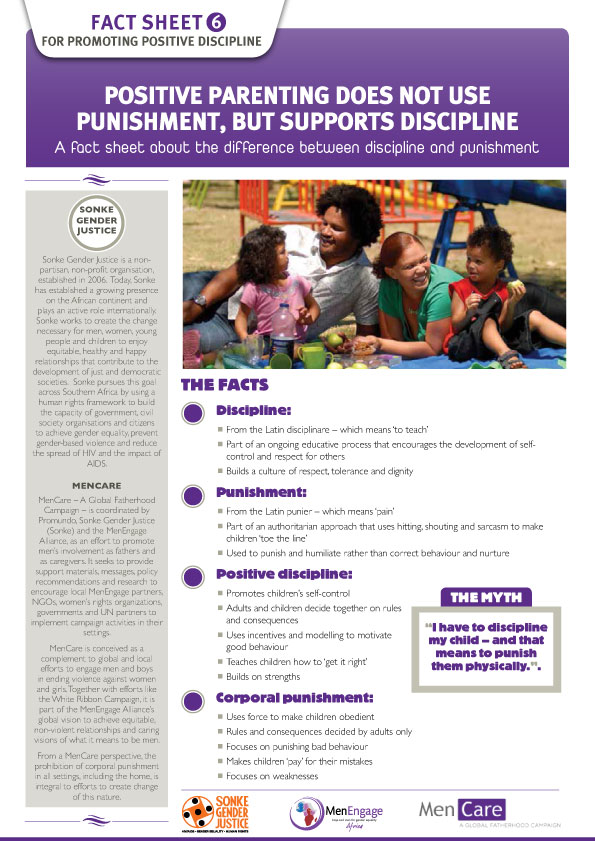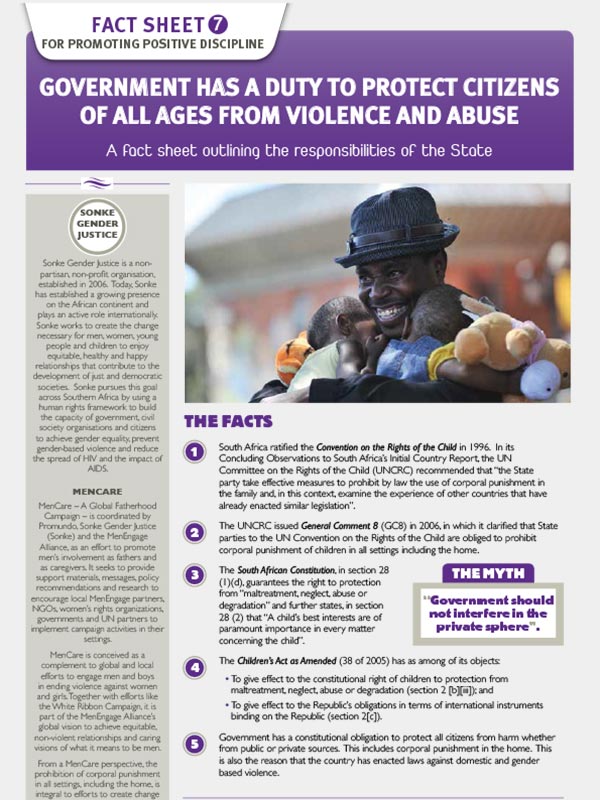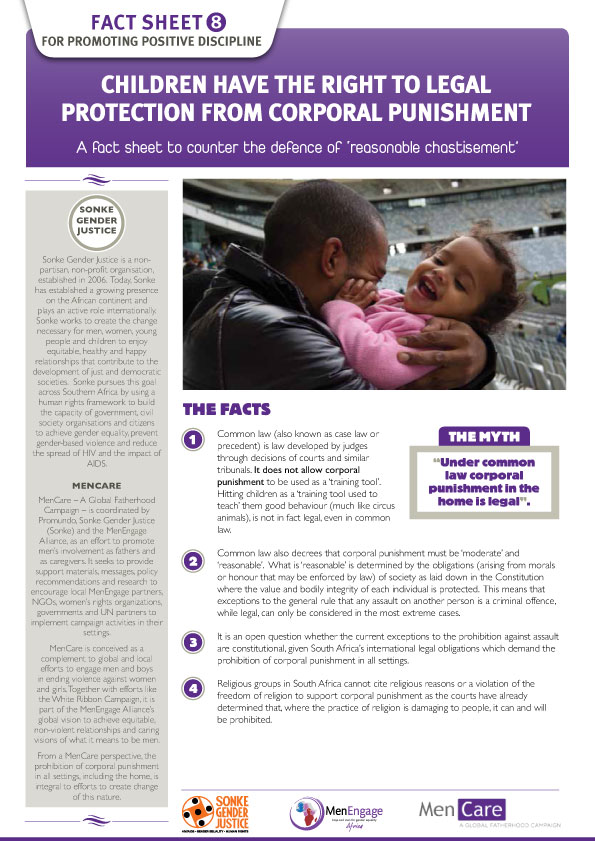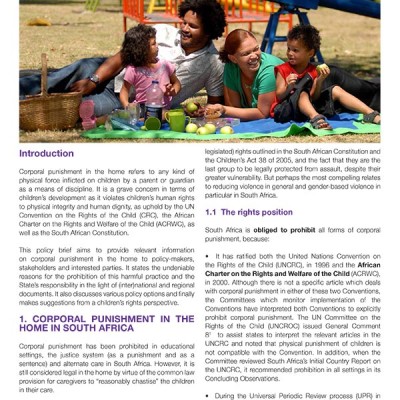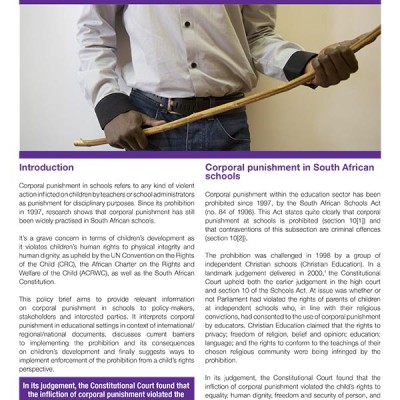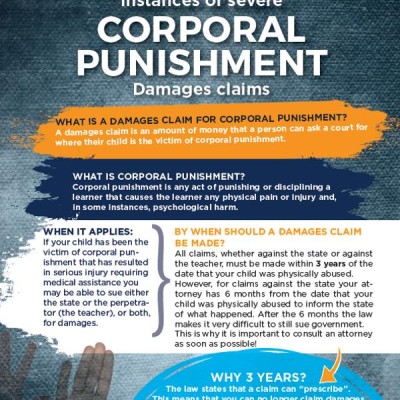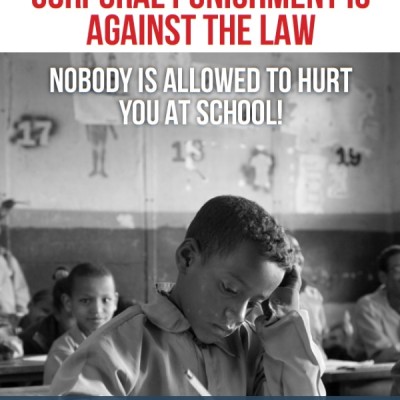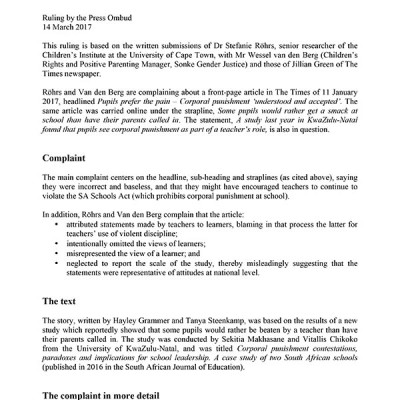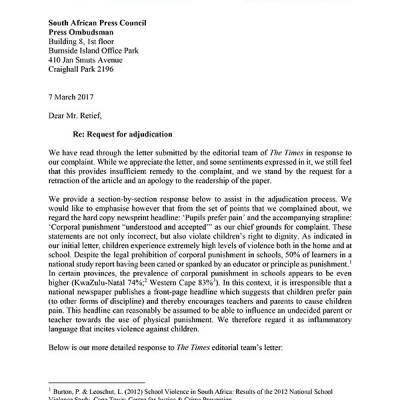The same set of arguments are often used to defend the use of corporal punishment. This set of fact sheets provide children’s rights activists and practitioners with the counter arguments to these popular myths, using rigorous research evidence.
These arguments are outlined by Wessel van den Berg in an article originally written for News24. Here is a short summary of each:
Myth number 1:
“If we ban corporal punishment in the home, we will make criminals out of parents.”
It is obviously not in the best interest of a child to remove parents. The state intervention will be a social worker, not a police officer, unless it has escalated to serious assault.
Myth number 2:
“My culture says I should hit my children to punish them”
All cultures have made this claim at some point, so it’s in fact not a culturally unique statement. There’s also good evidence to show that the practice was introduced by colonists who used to flog their slaves.
Myth number 3:
“Schools are ill disciplined and violent now that teachers can’t use corporal punishment”
Discipline starts at home, with the foundation of a good relationship between parents and children. The rates of teachers using corporal punishment are in any case still very high. Between 65 and 90 % of children are exposed to corporal punishment at schools across SA.
Myth number 4:
“There is a big difference between child abuse and corporal punishment used to discipline a child”
Lots of studies show the harmful effects of well-meant light corporal punishment, including lower IQ later in life. Any corporal punishment, no matter how light, is more harmful than no corporal punishment.
Myth number 5:
“The Bible gives me the right and duty to spank my children: spare the rod and spoil the child”
Religious rights are superceded by the basic human right to security of person and freedom in the South African constitution. We also don’t stone our neighbors when they burn their braai either. So why do we pick this practice to follow?
Myth number 6:
“I have to discipline my child – and that means to punish them physically.”
Huge difference between discipline and punishment. Children need boundaries and good discipline. Using physical punishment is in fact quite an undisciplined thing to do. Young children especially learn via imitation. So when you punish them, all they learn is punishment, not the preferred behavior.
Myth number 7:
“Government should not interfere in the private sphere”
The same argument was used to defend domestic violence. Any violence, regardless of who it is used against, should be outlawed.
Myth number 8:
“Under common law corporal punishment in the home is legal, and that makes it acceptable.”
The common law rule that allows parents to use ‘moderate’ physical violence on children infringes on the rights of the child – in particular the rights protected by sections 12 and 28 of the Bill of Rights.
Section 12(1)(c) states that everyone has the right to freedom and security of the person, which includes the right “to be free from all forms of violence from either public or private sources”. Section 12(2)(b) also guarantees for everyone the right to bodily and psychological integrity which includes the right “to security in and control over their body”.

